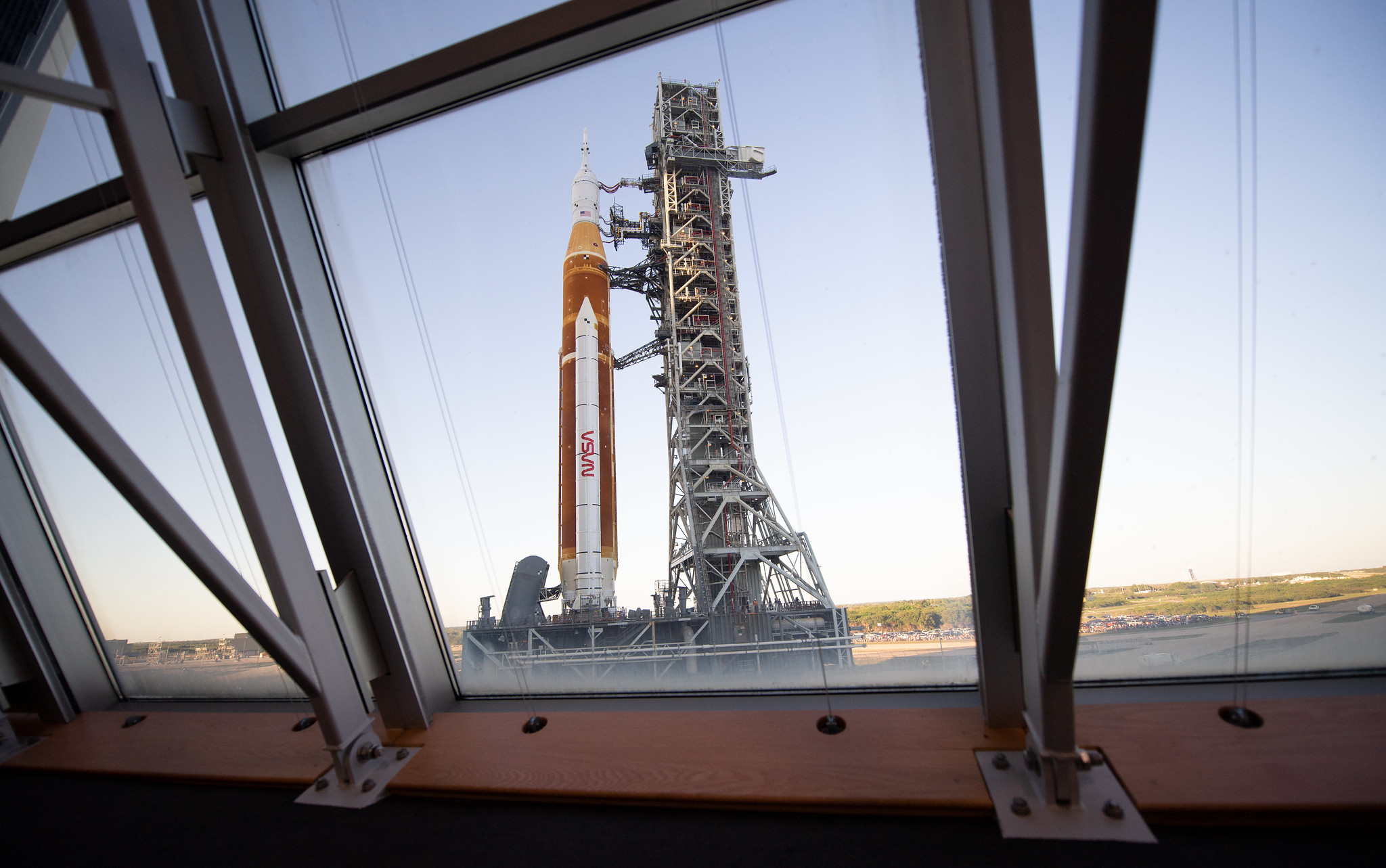
NASA began rolling its Artemis 1 moon mission out to the launch pad for testing at Kennedy Space Center (KSC) on March 17, 2022.
The agency's huge crawler-transporter 2 vehicle began hauling the Space Launch System (SLS) rocket and Orion capsule from KSC's Vehicle Assembly Building to Pad 39B at 5:47 p.m. EDT (2147 GMT). The 4-mile (6.4 kilometers) journey is expected to take about 11 hours.
It was a huge moment for NASA and its Artemis program, which aims to establish a long-term, sustainable human presence on the moon by the end of the 2020s. Artemis 1 will jump-start that vision, sending an uncrewed Orion on a roughly monthlong journey around the moon. Launch is expected in May or June.
See photos of the historic rollout, which marked the first time we've gotten a good look at the SLS-Orion stack.
Live updates: NASA's latest Artemis 1 moon mission in action
Related: NASA's Artemis 1 moon mission explained in photos
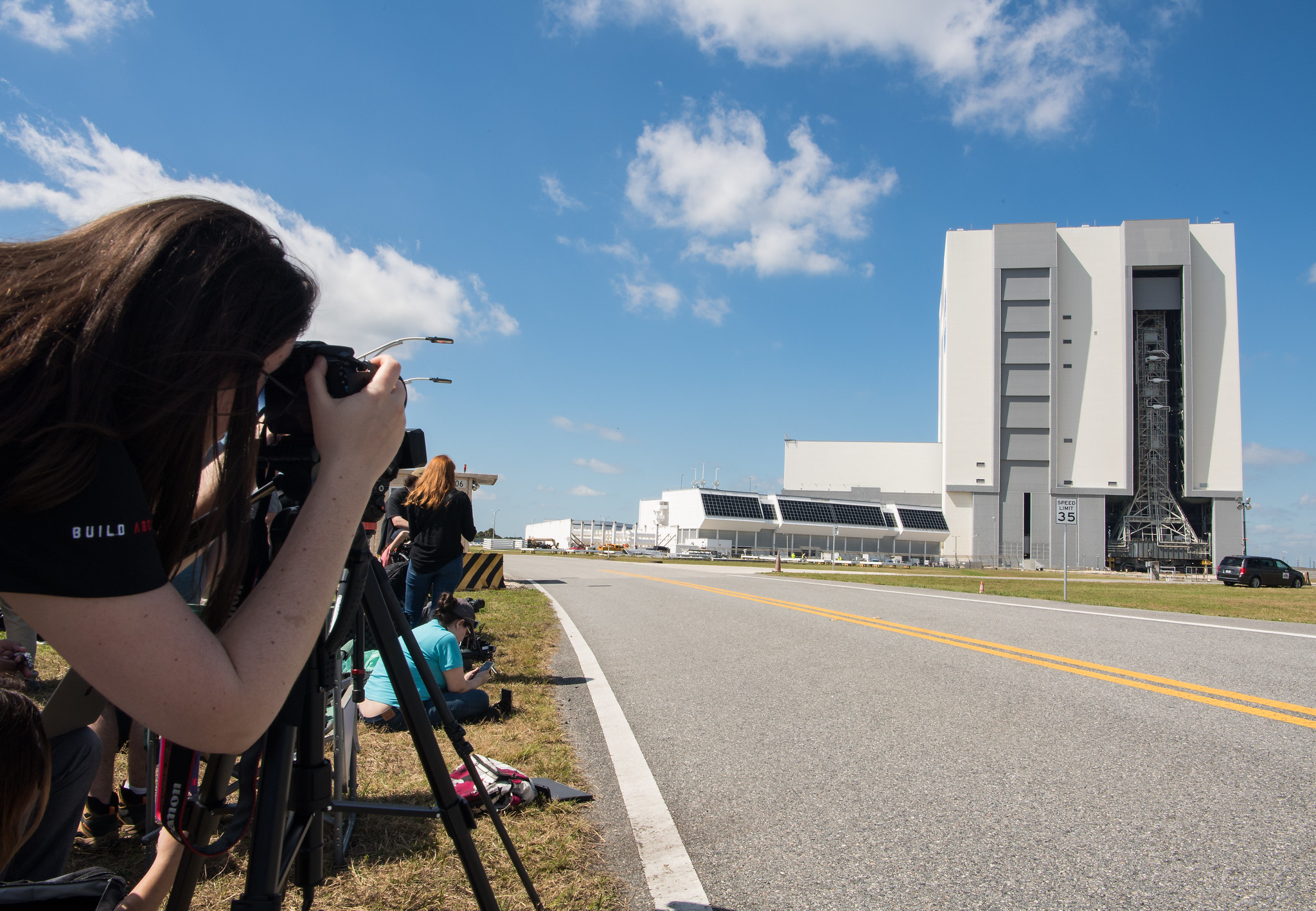
The Artemis 1 rollout was a big event. Here, media members eye the doors to High Bay 3 of the Vehicle Assembly Building at NASA's Kennedy Space Center in Florida as the Space Launch System (SLS) rocket and Orion spacecraft are rolled out to Launch Complex 39B for the first time on March 17, 2022.
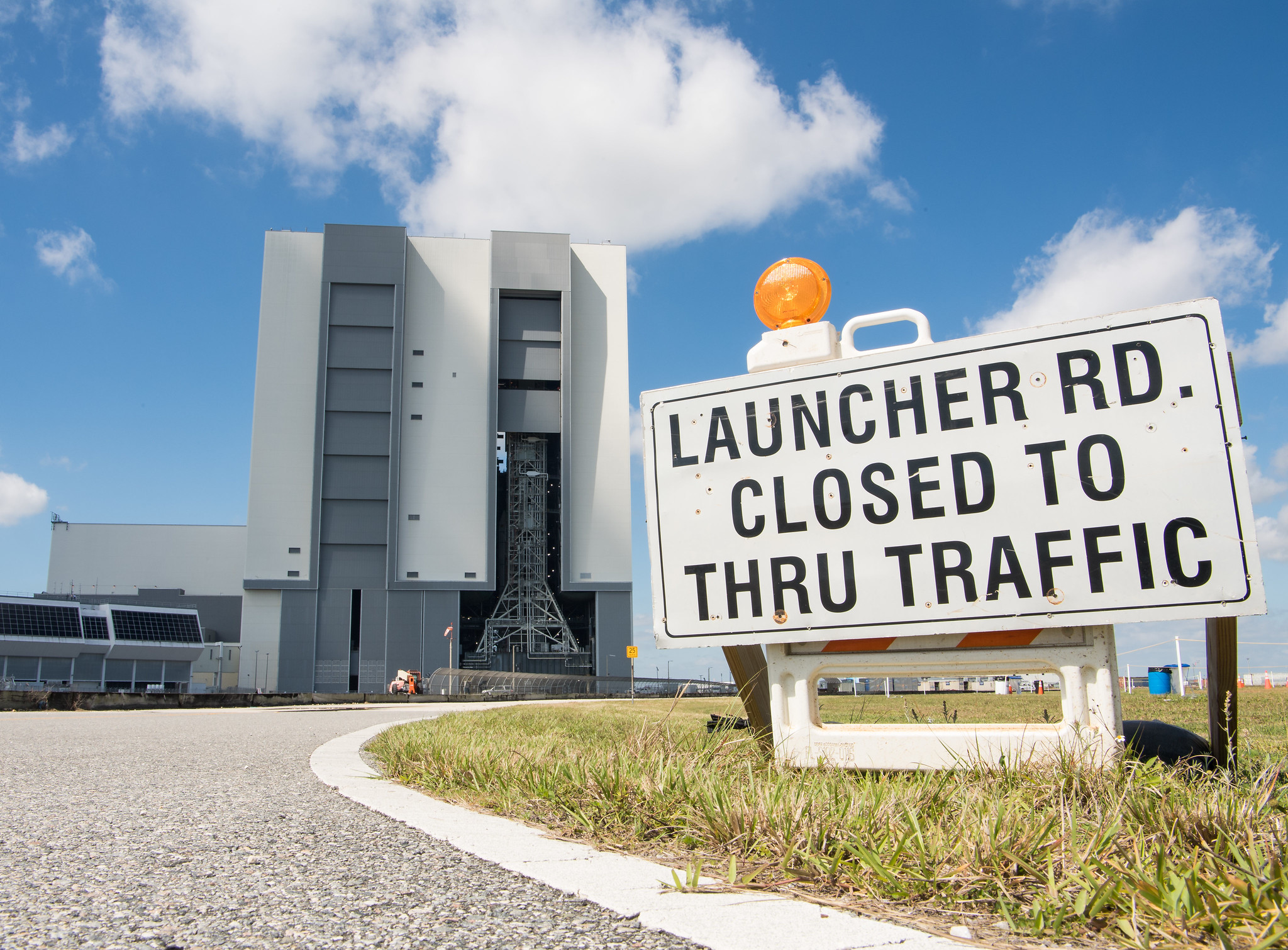
The Artemis 1 stack wasn't about to share the road with anyone.
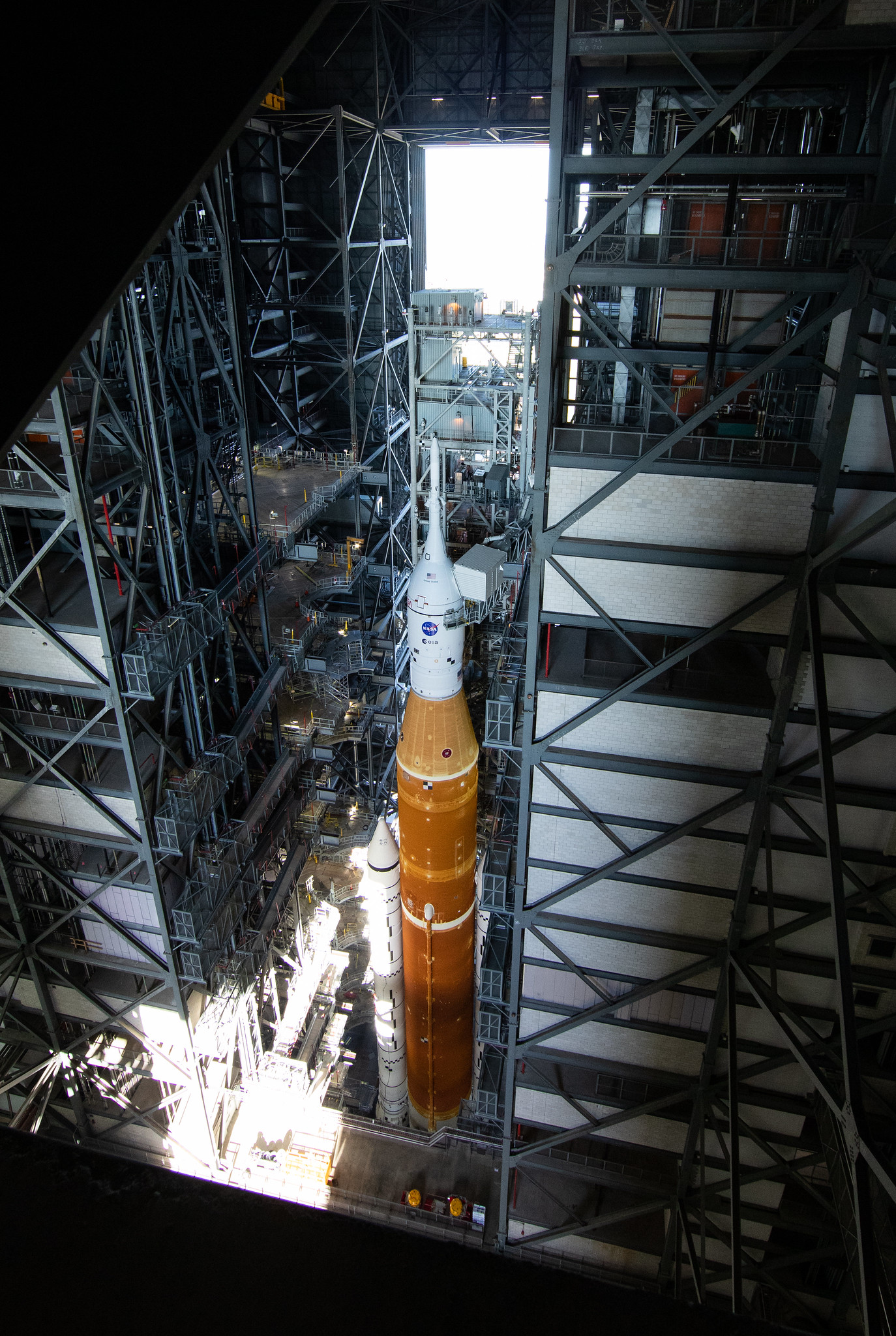
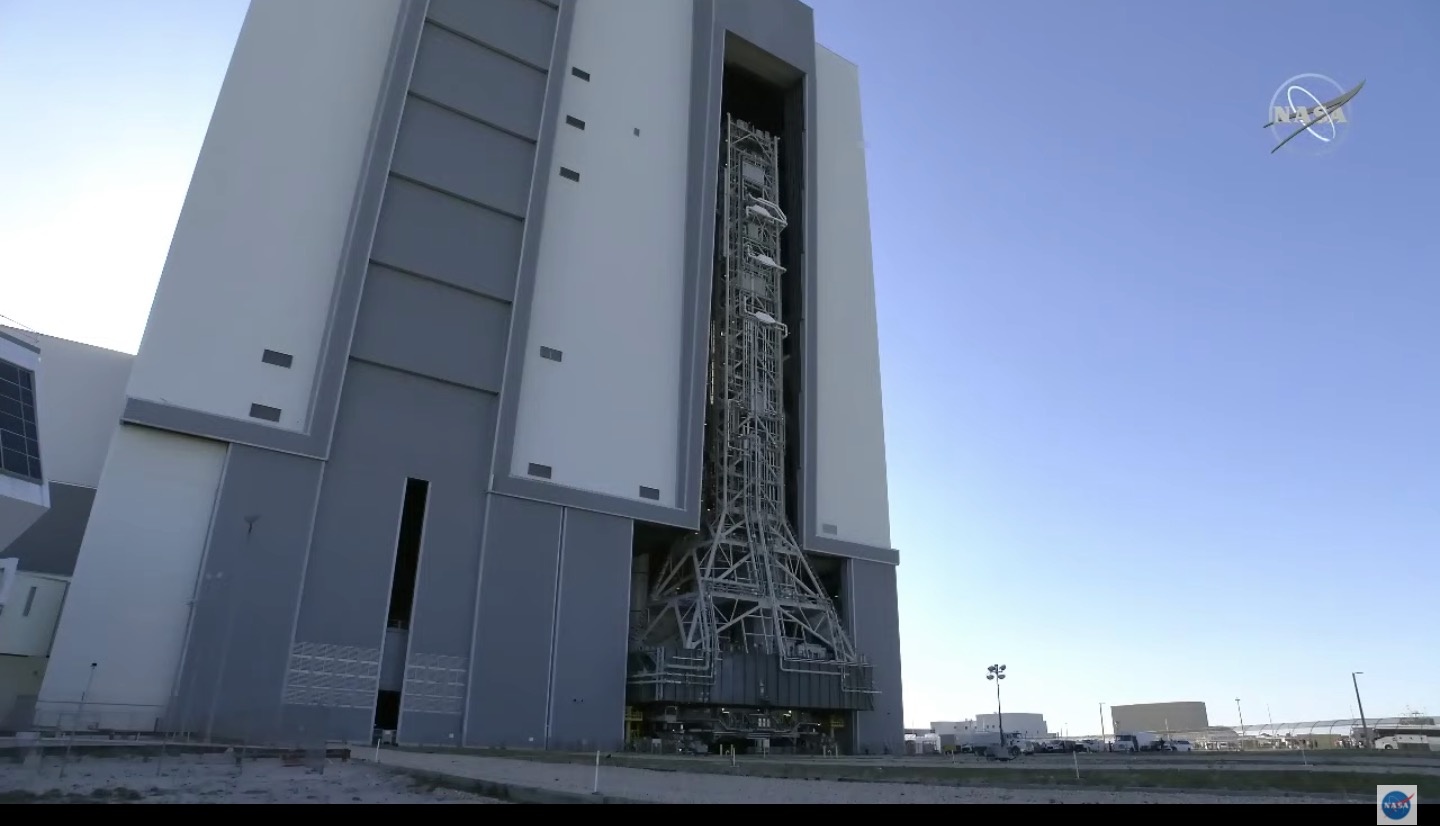
The Space Launch System rocket and Orion capsule that will fly NASA's Artemis-1 moon mission begin their 4-mile (6.4 kilometers) rollout to the launch pad for testing on March 17, 2022 at NASA's Kennedy Space Center in Florida.
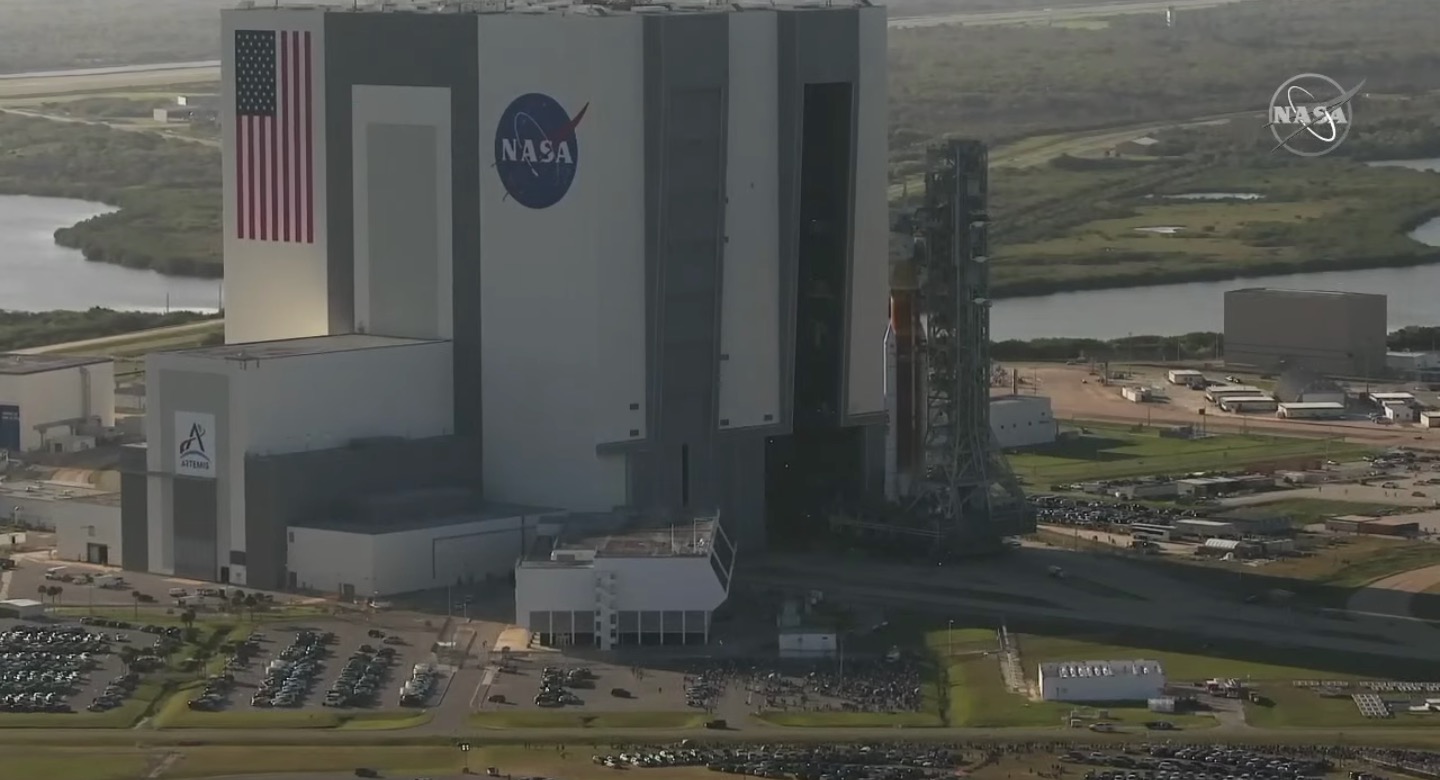
The Artemis 1 SLS-Orion stack emerges from the Vehicle Assembly Building at NASA's Kennedy Space Center during their rollout on March 17, 2022.
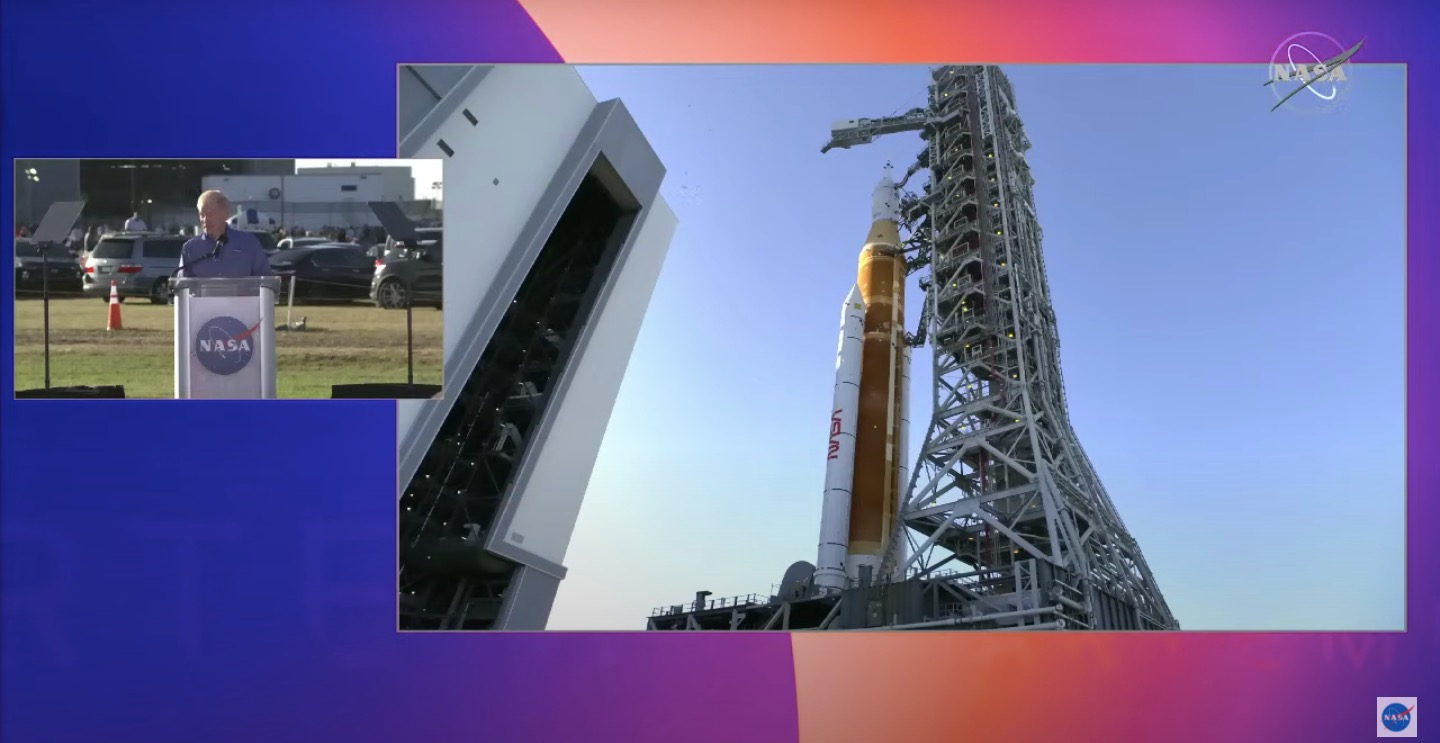
NASA Administrator Bill Nelson speaks at the Artemis 1 rollout at Kennedy Space Center in Florida on March 17, 2022.
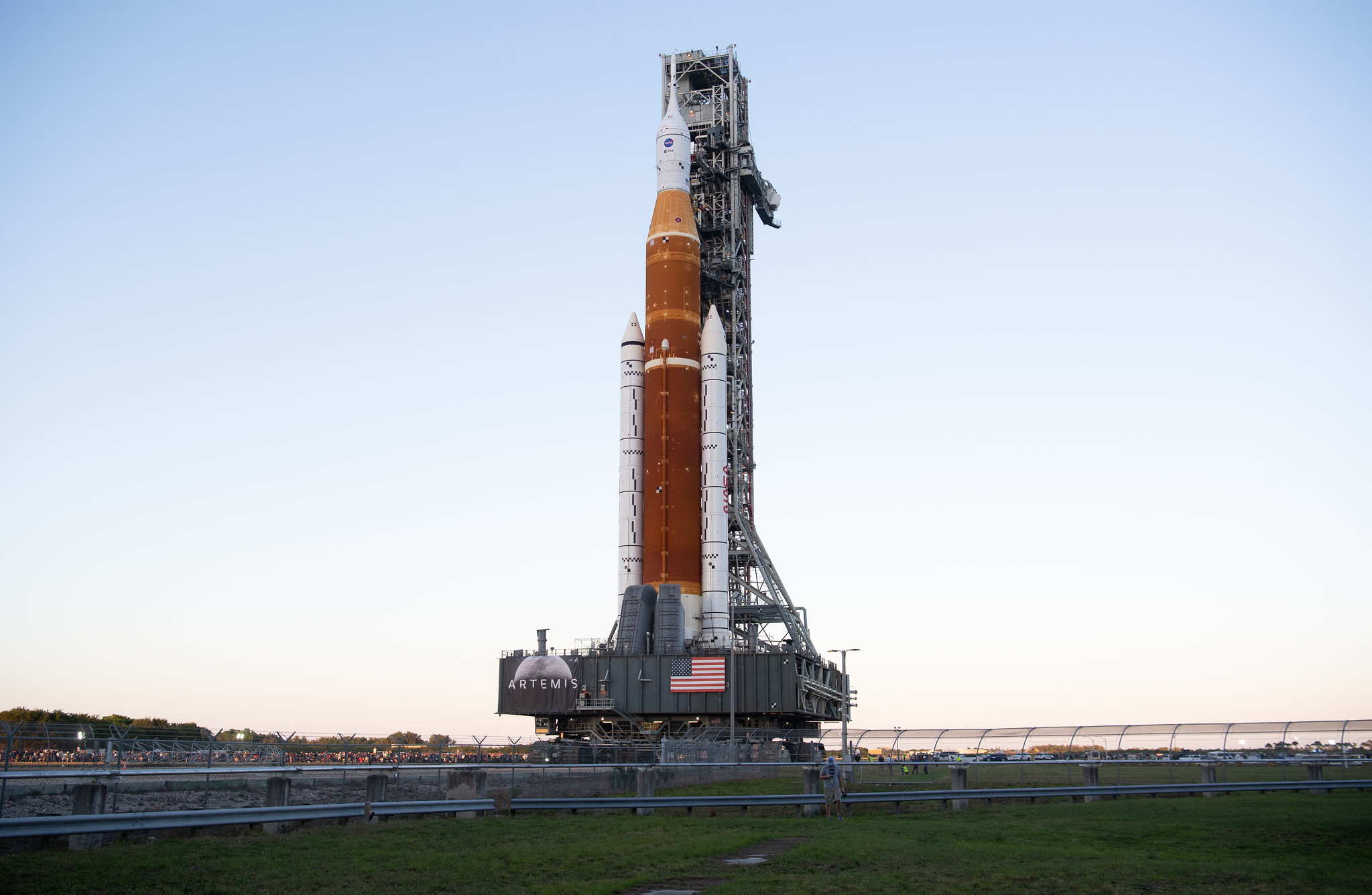
The SLS-Orion stack stands 322 feet (98 meters) — slightly taller than the Statue of Liberty.

NASA’s Space Launch System rocket with the Orion spacecraft aboard is seen through the windows of the Rocco A. Petrone Launch Control Center as it rolls out of the Vehicle Assembly Building at NASA’s Kennedy Space Center toward Launch Complex 39B for the first time on March 17, 2022.
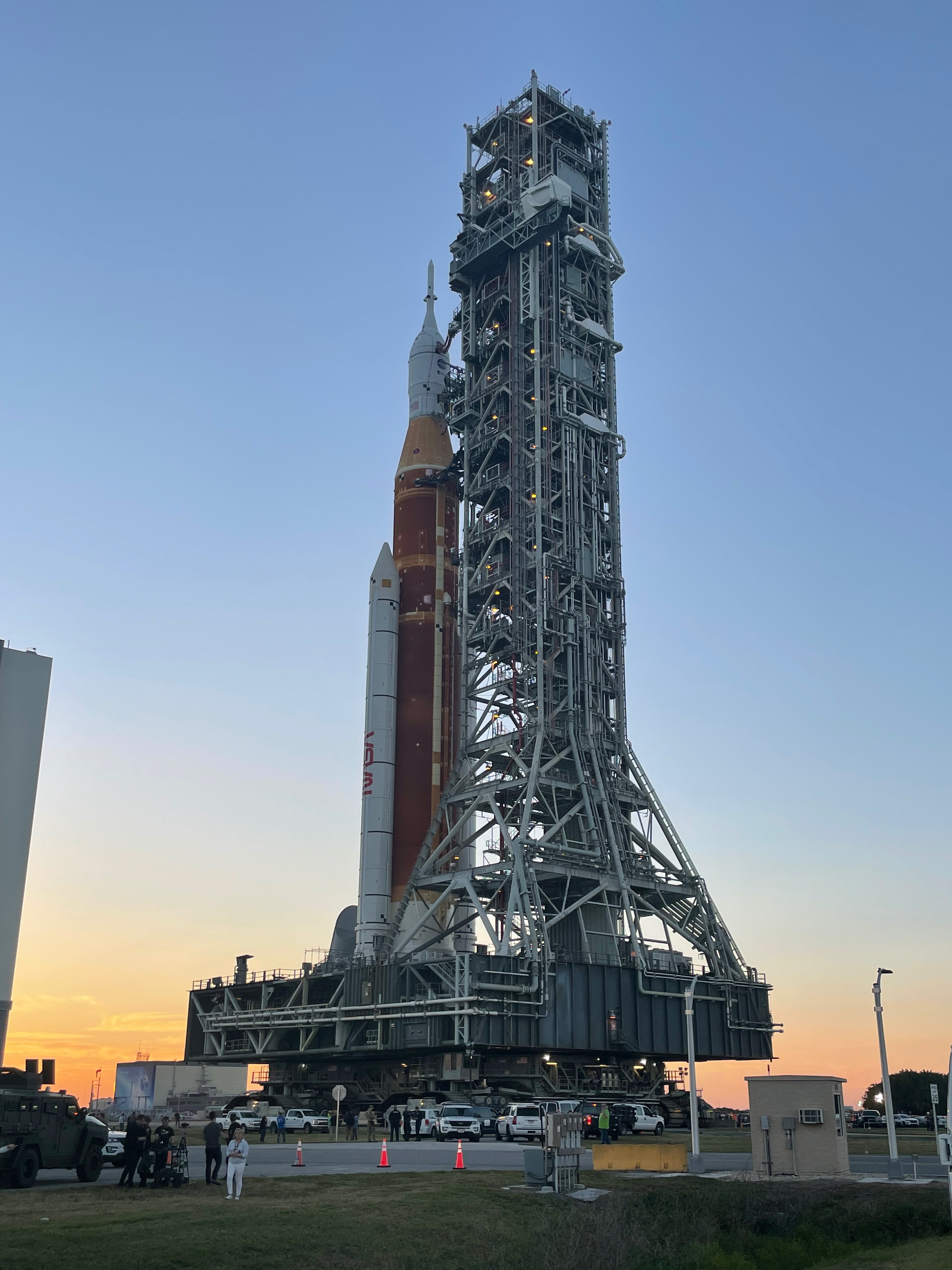
The SLS-Orion stack are traveling with their specially built launch tower, known as Mobile Launcher-1.
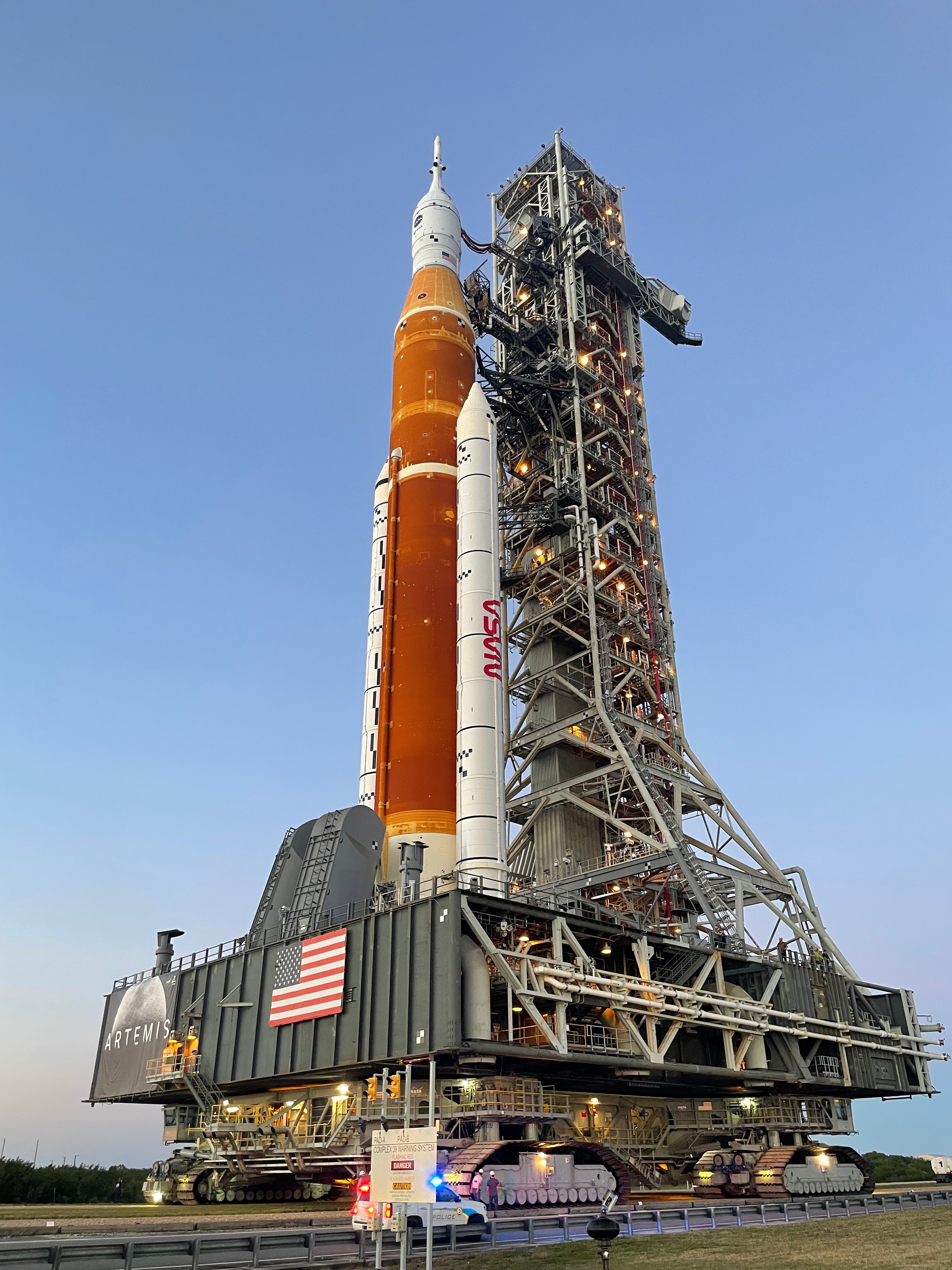
Daylight fades on the Artemis 1 stack, which is expected to arrive at Pad 39B in the predawn hours of March 18, 2022.

The Artemis 1 stack is being hauled to the pad by NASA's crawler-transporter 2, one of the largest vehicles every built. CT-2 was constructed in 1965 to support NASA's Apollo moon program and has been modified over the past few years to serve Artemis.
Get the Space.com Newsletter
Breaking space news, the latest updates on rocket launches, skywatching events and more!
Join our Space Forums to keep talking space on the latest missions, night sky and more! And if you have a news tip, correction or comment, let us know at: community@space.com.

Michael Wall is a Senior Space Writer with Space.com and joined the team in 2010. He primarily covers exoplanets, spaceflight and military space, but has been known to dabble in the space art beat. His book about the search for alien life, "Out There," was published on Nov. 13, 2018. Before becoming a science writer, Michael worked as a herpetologist and wildlife biologist. He has a Ph.D. in evolutionary biology from the University of Sydney, Australia, a bachelor's degree from the University of Arizona, and a graduate certificate in science writing from the University of California, Santa Cruz. To find out what his latest project is, you can follow Michael on Twitter.








